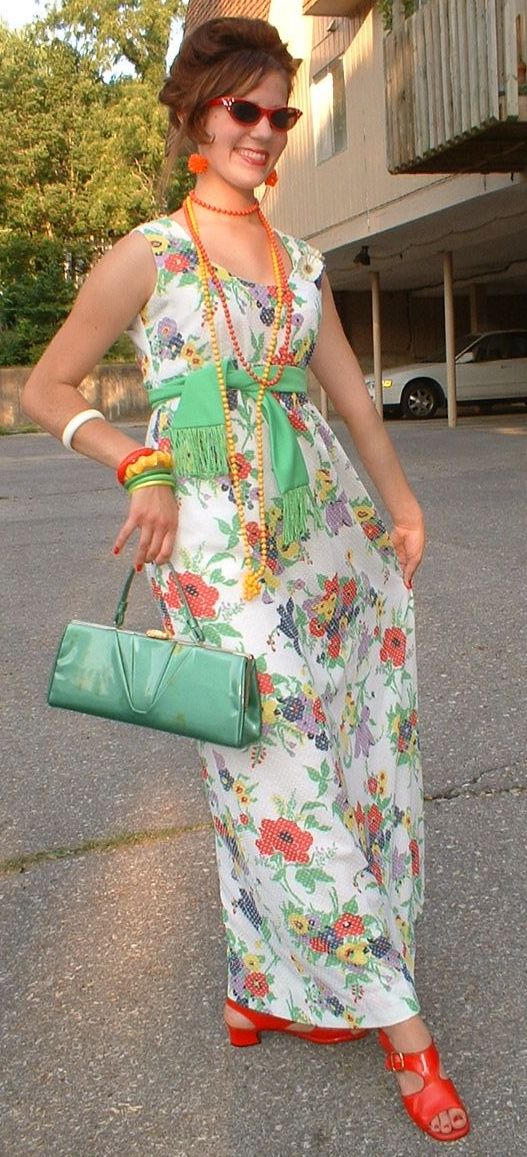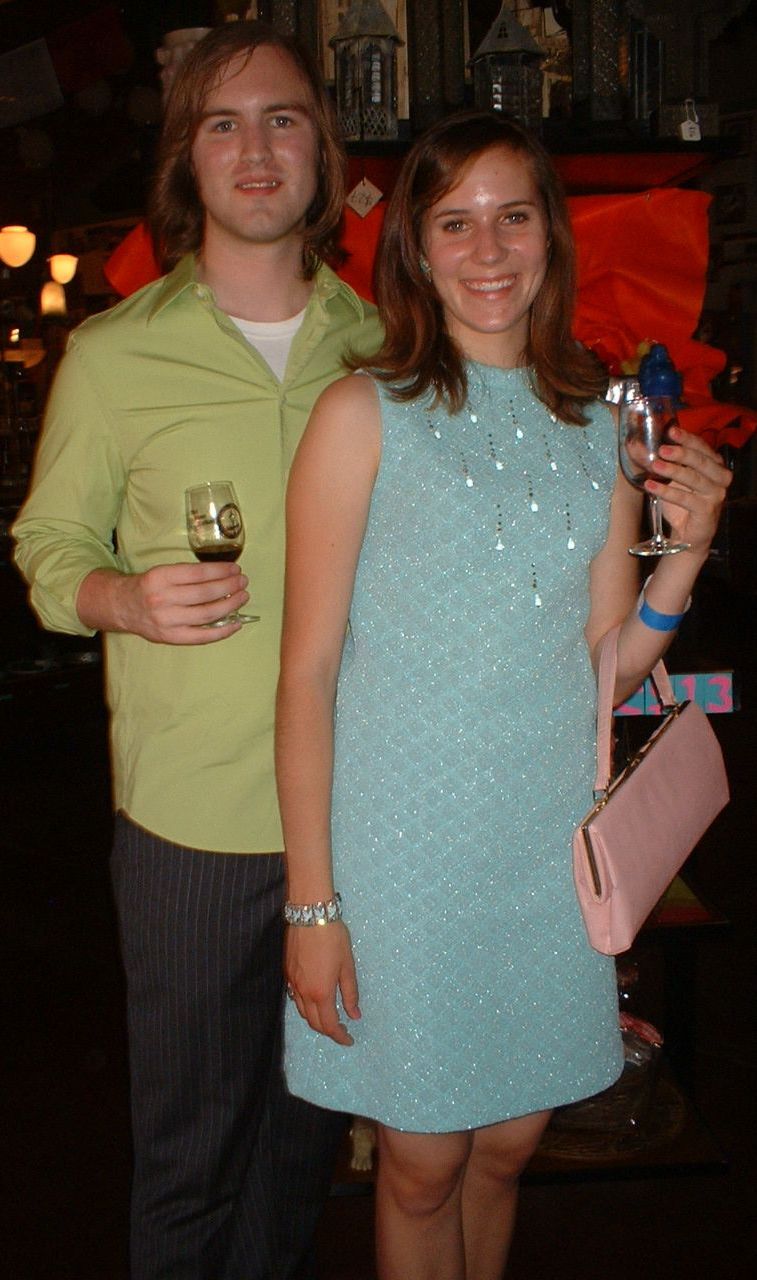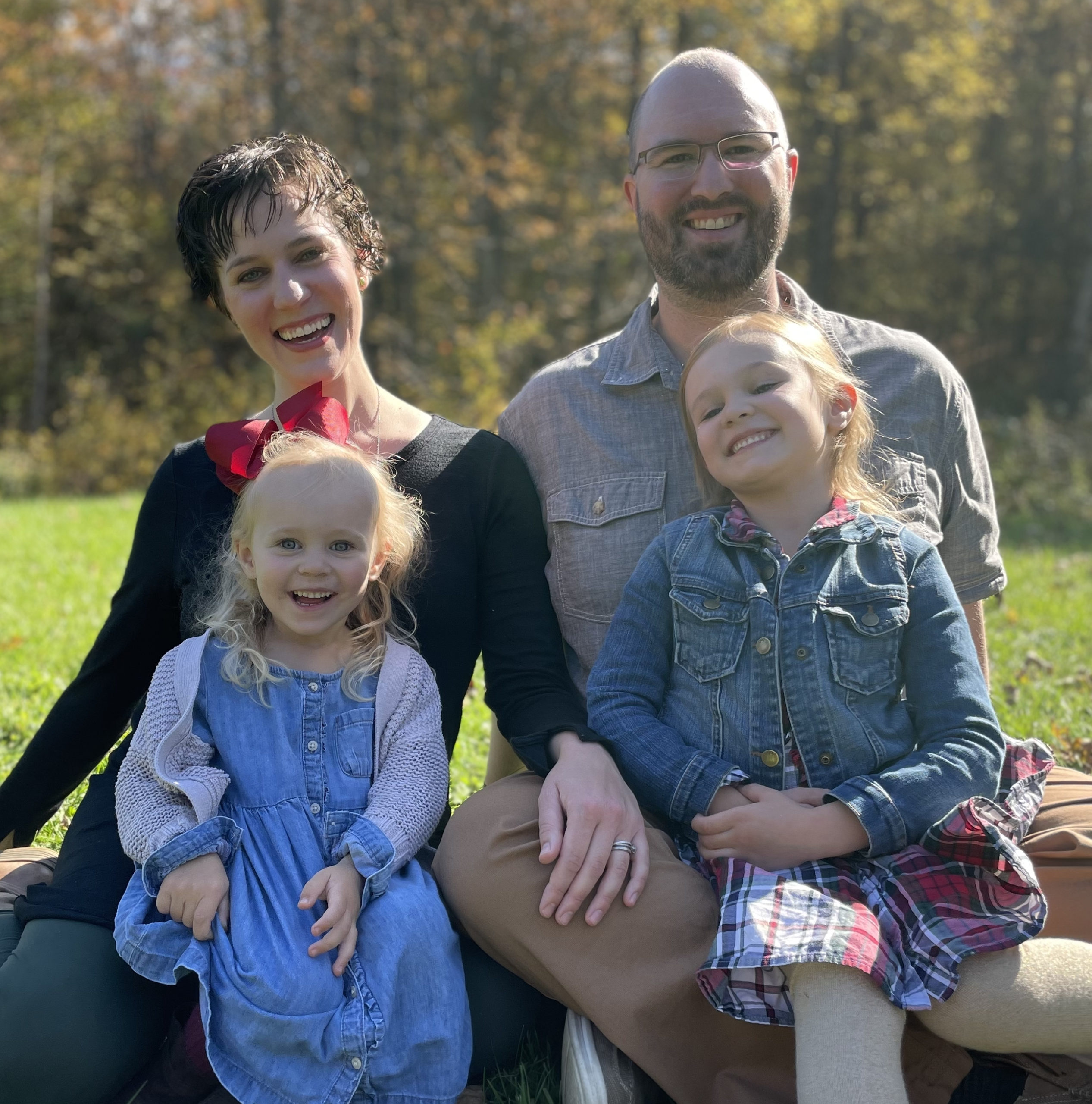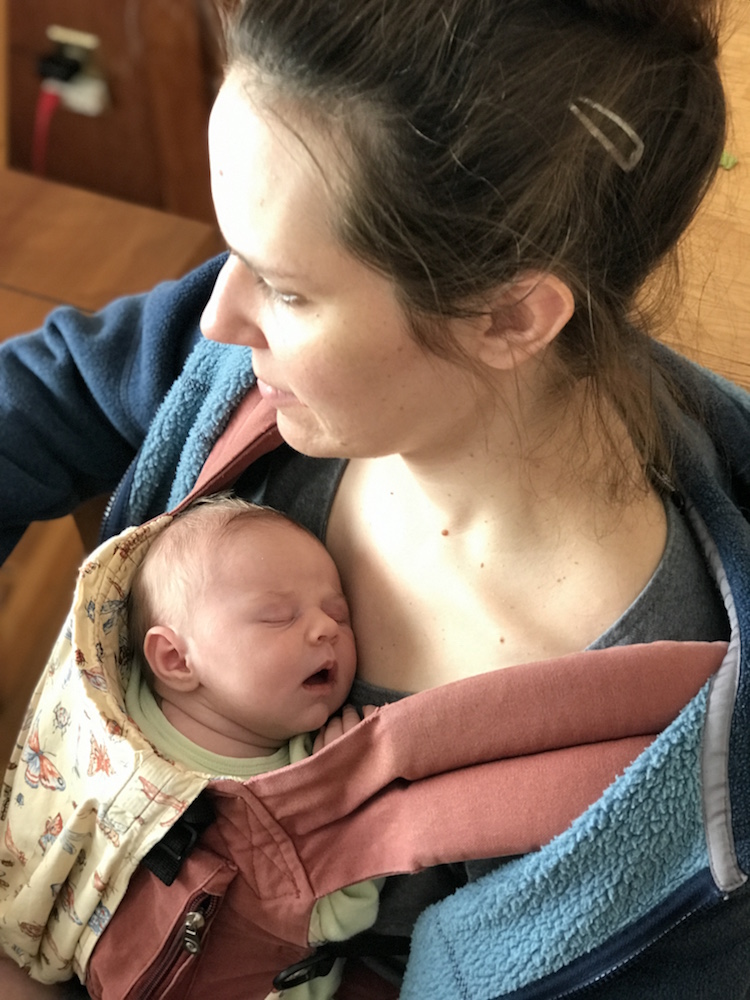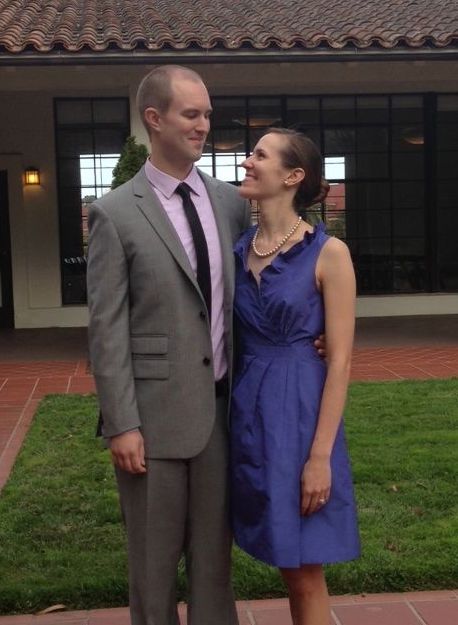I have a hectic relationship with clothing. In my 20s and early 30s, I worshipped it. I stuffed the closets of our various rental apartments with beaded slip-on loafers I bought at an outdoor market in Strasbourg, France; a vintage bubblegum-pink stewardess dress I liberated from a Goodwill in rural Kansas; a red Banana Republic raincoat I found (with tags on) at a consignment store in Boston.
Recently, a number of readers–mostly also young (am I still young?) moms–have asked me what I wear and how I approach my relationship with clothing these days. Longtime readers will recall my three-year-long all-out ban on buying clothing. I successfully went three years without buying anything because I desperately needed a re-set. I bought clothes at thrift stores and yard sales constantly. I had enough clothing to clothe an entire soccer team. Several teams.
I’ve only recently realized how intertwined my clothing obsession was with my previously undiagnosed depression and anxiety. I’m starting to unravel the emotions I carried in my clothes and my appearance. It”ll probably take me the rest of my life, but I’m happy to take you along with me. So this post isn’t about money, but it is about how material things can take on too much importance in our lives. How we can define ourselves by what we own–by what we buy. This is the first in a new series on clothes; the next post will be a practical run-down of what I wear these days. But today, enjoy a journey through the recesses of my brain.
My Clothing Obsession
I loved my clothes. They were my souvenirs, my way of tracking where I’d lived, what I’d worn when I was 22, how I felt about myself when I wore them. These clothes had memories woven through them. I’d lugged them from Kansas to Europe to Brooklyn to Washington, DC to Boston. And finally, to Vermont. In Vermont, they sat in my basement tucked into plastic tubs lined up on metal shelves. They had masking tape labels with things like, “Cloaks,” written on them, which sounded preposterous until you slid the tub off the shelf, pried open the lid and saw that there were, in fact, five woolen cloaks inside. Never mind that I’m allergic to wool. These were bitching cloaks.
You might think I only wore these clothes in college. In grad school at the latest. You would be wrong. I wore them until I got pregnant with our first child. I was 31. For work, I had what I considered a toned-down approach that included blazers. But I still wore my floor-length, vintage ’70s floral sleeveless gown on the weekends. In public. I liked how I looked.
What Happens When You Birth Two Babies (not at the same time)
Having a baby changed my body. We all know this happens, it’s a cliche to even tell you. But I hadn’t realized it would mean I’d never fit into these costumes again. I gained weight; but more relevant is the fact that things moved around. My rib cage is somehow a different shape. As are my hips. After I had a second baby, things migrated further and it became clear my body was settling into a contented, pre-middle-aged arrangement.
I began to slowly peel off the clothes I’d never wear again and donate them to the thrift store. I no longer worked in an office; I lived on a farm in rural Vermont. I wasn’t ever going to wear a strapless polka-dot dress with a black and red tulle skirt again. At first, I mourned every piece that left my house. I felt like I was losing part of who I was. So I slowed my give-away project, I let myself forgot about it. I let everything sit in the basement, kept the “Cloaks” label in place and moved on with my life upstairs, which mostly involved potty training and trying to bake cookies with two children under the age of three.
I was diagnosed with postpartum depression when the second baby was five months old. I started seeing a therapist. I started taking Zoloft. Everything lifted. Everything was lighter. I realized I’d been facing the wrong way for three years. I’d been squinting to look backwards at the person I used to be. It was easy to do because I met my husband when we were 18 and I still loved him. And so, there we were together at 21, at 25, completely different people. Easy people without responsibilities. Without stability. Now, with a c-section and a VBAC carved onto me, I was trying to lose weight and whittle myself back down to the person I used to be. Thanks to my therapist, I realized that person wasn’t a happy one. That person standing there at a work party, in a vintage ’50s rhinestone-collared cocktail dress, was depressed. Anxious. A perfectionist unable to be content. That person was always reaching for the next external validation–a promotion, a more advanced yoga pose, a new dress.
It Was Depression All Along
Realizing that it had been depression and anxiety all along is the best thing that’s ever happened to me.
Once I knew that, I understood I didn’t have anything to prove. I realized that no one cared if I was hitting the next milestone for external validation. I’d been this anxious, manic little creature throwing myself into whatever I thought would be “the next thing” to bring me happiness. Peace. Stillness. But, of course, none of that comes from accomplishments or other people. Or clothes.
The clothes weren’t the cause of my depression and anxiety. They were a symptom. A manifestation of my need to be complemented, perfect, attractive, interesting, good. A good person wearing good clothes. If I could define myself by my outward appearance, I could fool myself into thinking I was ok. Totally worked for 10 years, if you count sweat puddling on your laptop keyboard while you work as ok. It was ok until I had two small people looking to me for guidance on how they should learn to define themselves.
Therapy And Medication
Both worked for me. They don’t work for everyone. Zoloft saved my life and I continue to take it. I’ll probably take it for the rest of my life and that’s fine with me. I’ll do anything to not be swallowed by depression and anxiety again.
I went to therapy in the pre-online-therapy boom, so I went in person. That means I drove 45 minutes each way to see my therapist. I did so because I had to. I also paid $150 out-of-pocket for every session because my insurance didn’t cover a single therapist who had availability. When I called the hospital where I delivered our second baby and told them I was pretty sure I had postpartum depression, their response was, “well, our PPD therapist is fully booked. We can get you an appointment in about six months.” To this day I cannot believe that was their response. But I’m fortunate. I had the time and the money to find a private therapist who had availability that week. Because I needed to see someone ASAP.
This was pre-pandemic and it’s my understanding this has only gotten worse. That therapists’ availability and prices have only become more constrained due to the mental health crisis resulting from the horror that is Covid. Enter online therapy. Like I said, I haven’t done this, so I’m not vouching for it personally. But, TalkSpace is one of those online therapy companies that works really well for some folks (affiliate link). There’s been backlash against some of these online therapy companies–which I totally get–but I also get that for some people, finding a local therapist is cost or time prohibitive. Or impossible. For some folks, online therapy is the best (or only) option. If you feel like talking with someone might be helpful, TalkSpace is an options available to you (affiliate link). I would not be the person I am today without therapy and medication. Acknowledging my long-term depression and anxiety and getting treatment is what allows me to now sleep through the night, not snap at my children constantly, not feel exhausted all the time, not dread getting out of bed, and to feel like I have things to look forward to. To feel like my life is worthwhile.
Four Years Straight
After getting treatment for my depression and letting go of defining myself by my clothes, I fell into a pit of hand-me-down maternity and nursing outfits. Since my kids are 27 months apart, I was pregnant or breastfeeding for four years straight. For four years straight I wore stretched-out high-rise pants, sloping and stained nursing tops, sad cardigans that used to be a color? Maybe?
This was practical; every part of my life was filthy. I worked from home, no one saw me in a professional context. I had a headshot I’d plaster up anytime someone felt the need to see what I looked like. Although I did not, and do not, look like that headshot. I was always behind a computer or under a child. The baby never wanted to get out of the carrier and the toddler found a way to adhere to my legs anytime we were in public, so no one could see my clothes anyway.
Emerging from The Fog of Infant-hood
Then things changed again. The baby stopped nursing. The toddler went to school. I worked more and didn’t always have someone stuck to my chest. I decided to buy new clothes. Before buying anything, I went through everything I owned. Most of it didn’t fit. Trying on 12 pairs of jeans and finding that you can’t pull any of them up past your hips is not my favorite way to spend ten minutes. After that, I didn’t bother trying on the rest. None of it feel like my clothing anymore. And this clearing out stopped being sad. It turned into liberation. I was excising the unneeded.
For the first time, I didn’t want to be 22 again.
I didn’t want to suffer crippling anxiety and sweat through a suit jacket during a job interview. I didn’t want to go back to a time when I wouldn’t eat dessert so I could button the high-waisted camel-colored, size 2 J Crew skirt I found for $1 at the bottom of a clothing pile at a yard sale. I didn’t want to feel that desperate for approval again. I didn’t want to feel defined and limited by my clothes. I wanted to be comfortable and content. I wanted to get older, to move on, to become someone different.
I don’t know how much clothing I gave away because it didn’t happen all at once. I remember I filled an entire large cardboard moving box. I also remember taking six full trash bags to Goodwill. I know I gave my niece at least three suitcases of clothes that look fantastic on a 15-year-old and sad on a 38-year-old. I know that my entire wardrobe–all four seasons–now fits into my side of the closet. Without cramming. I don’t even tuck stuff over on my husband’s side anymore, hiding it behind the blue bathrobe he never wears. I kept one plastic garment rack in the basement that’s one-quarter full of the gems I can’t give up.
After I got rid of all the clothes that were trying to squeeze me into a definition I don’t fit anymore, I needed to figure out what I did want to wear. I gave away all the stretched-out, stained maternity and nursing clothes and I thought about what I like to wear. Not what I’m supposed to wear, not what I wear to impress other people, not what’s in style. What I like to wear. I’ll tell you what that is next time.
How do you approach clothing? What’s changed for you over the years?
Never Miss A Story
Sign up to get new Frugalwoods stories in your email inbox.

